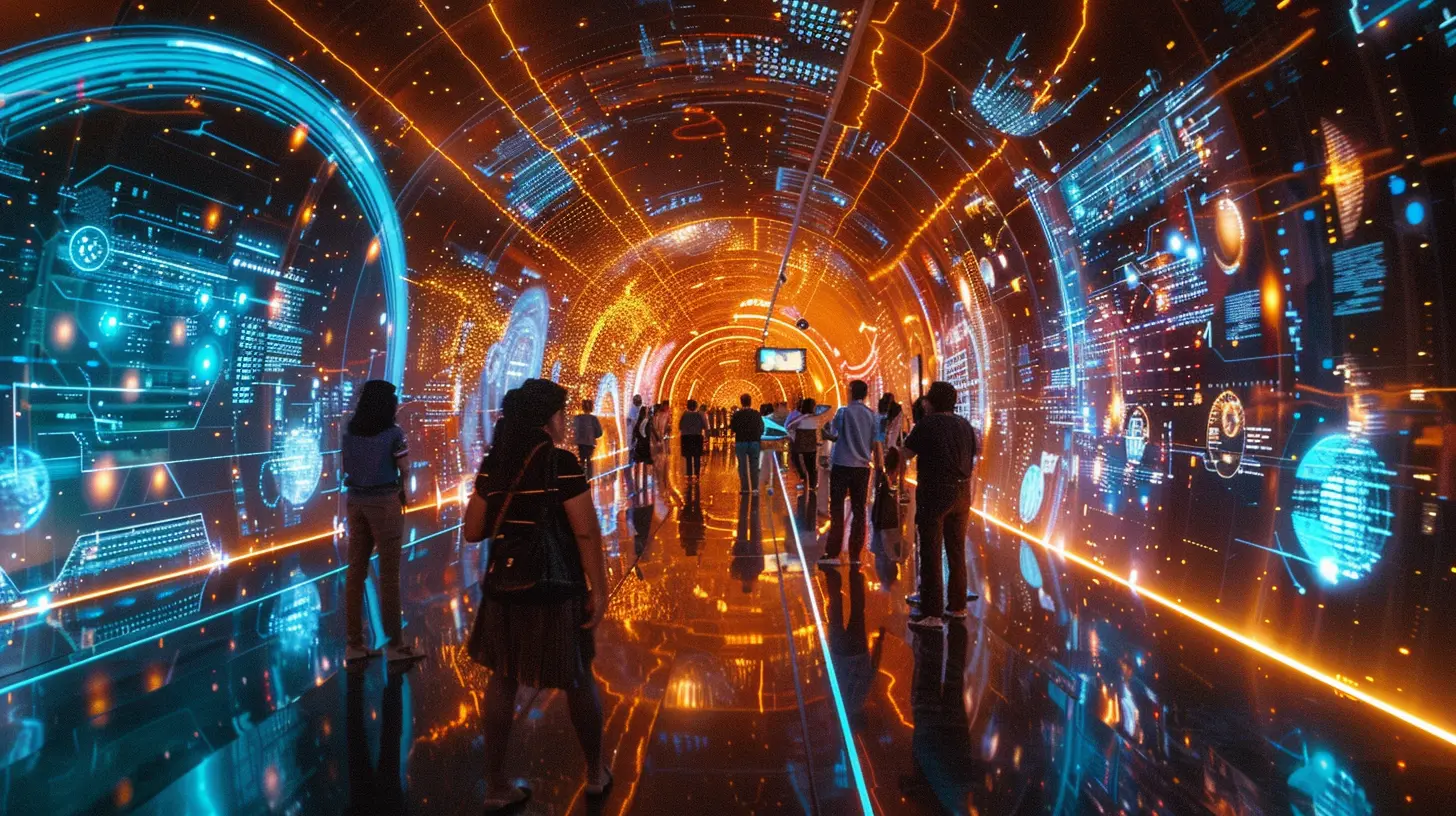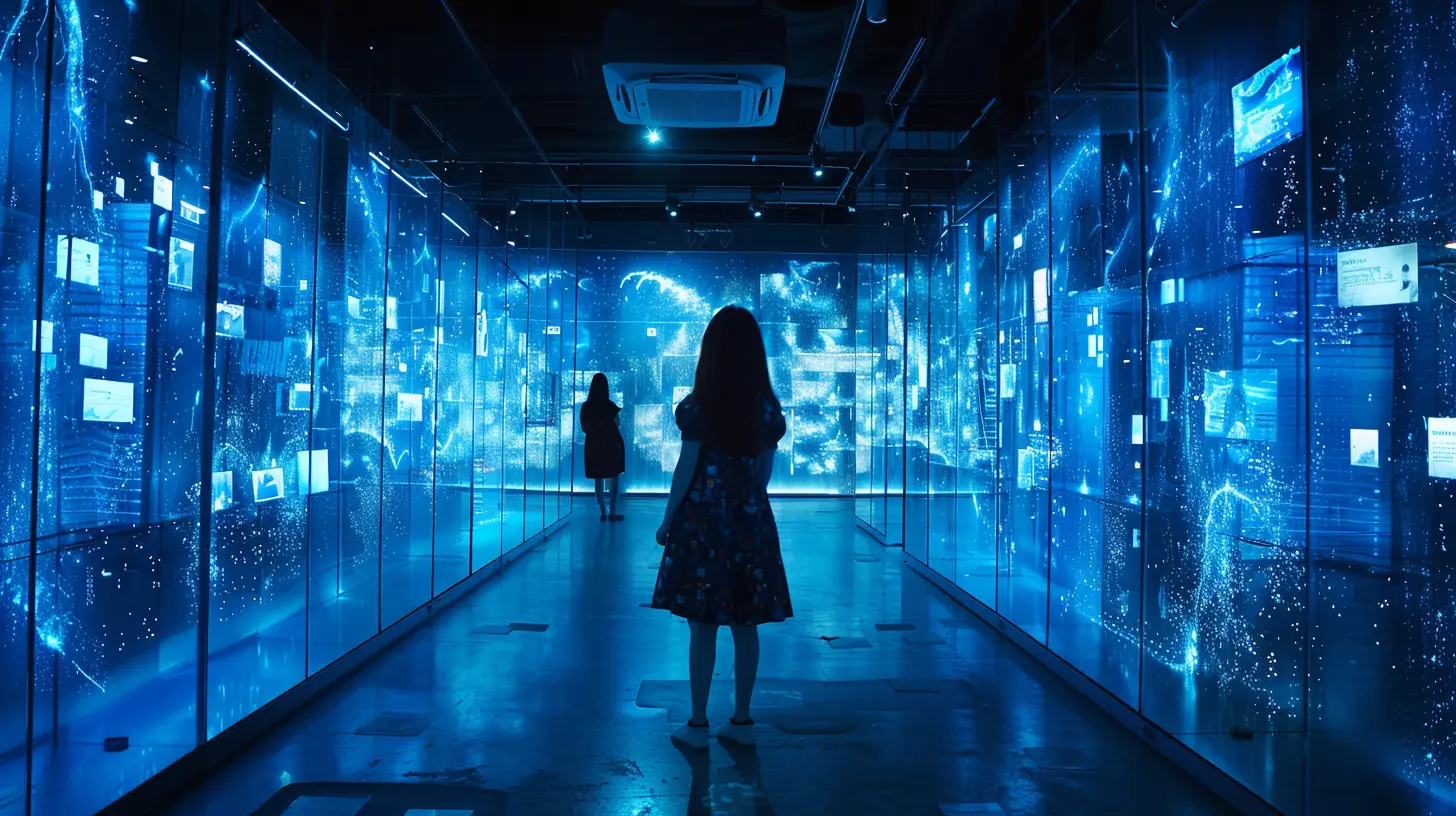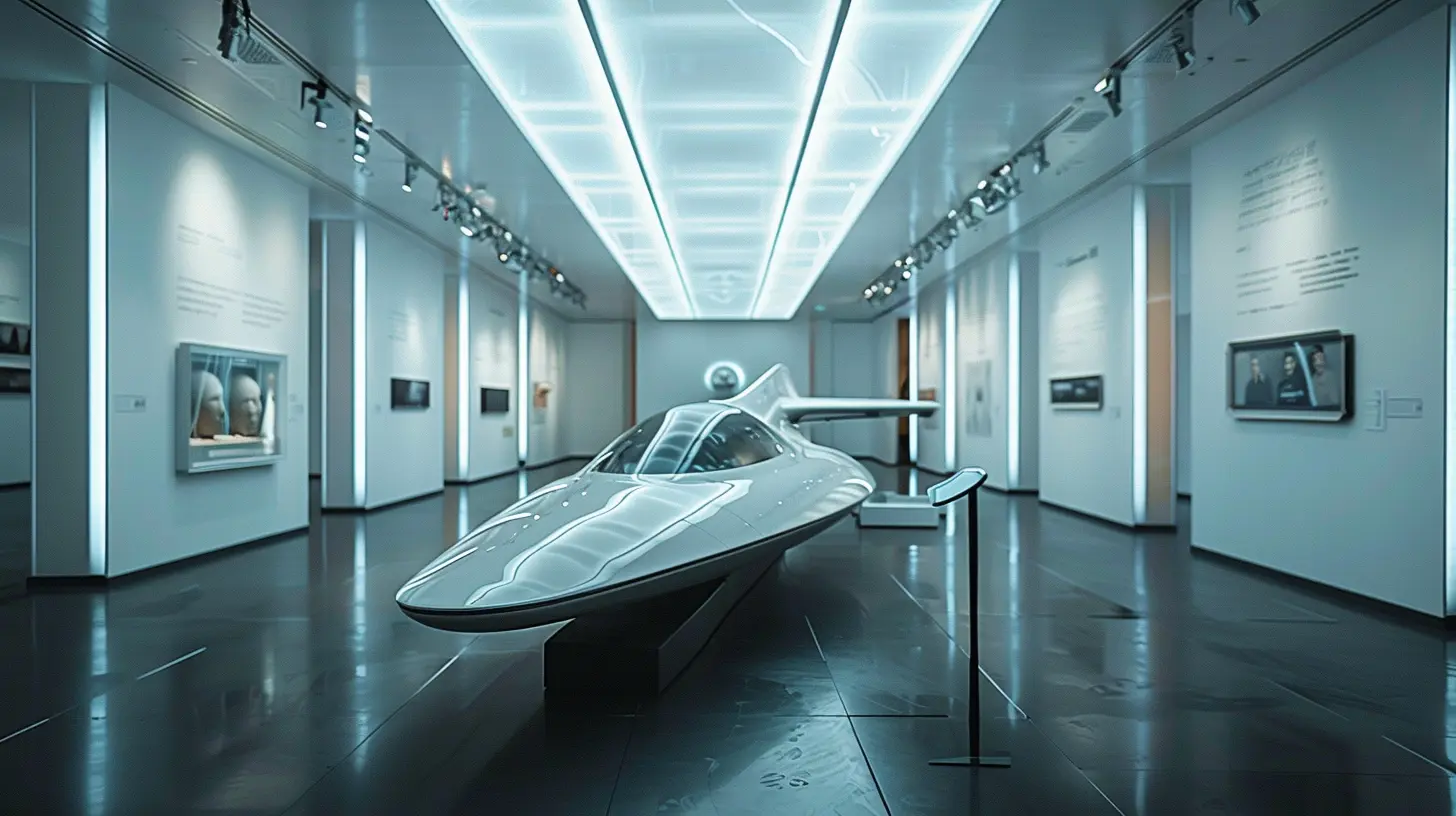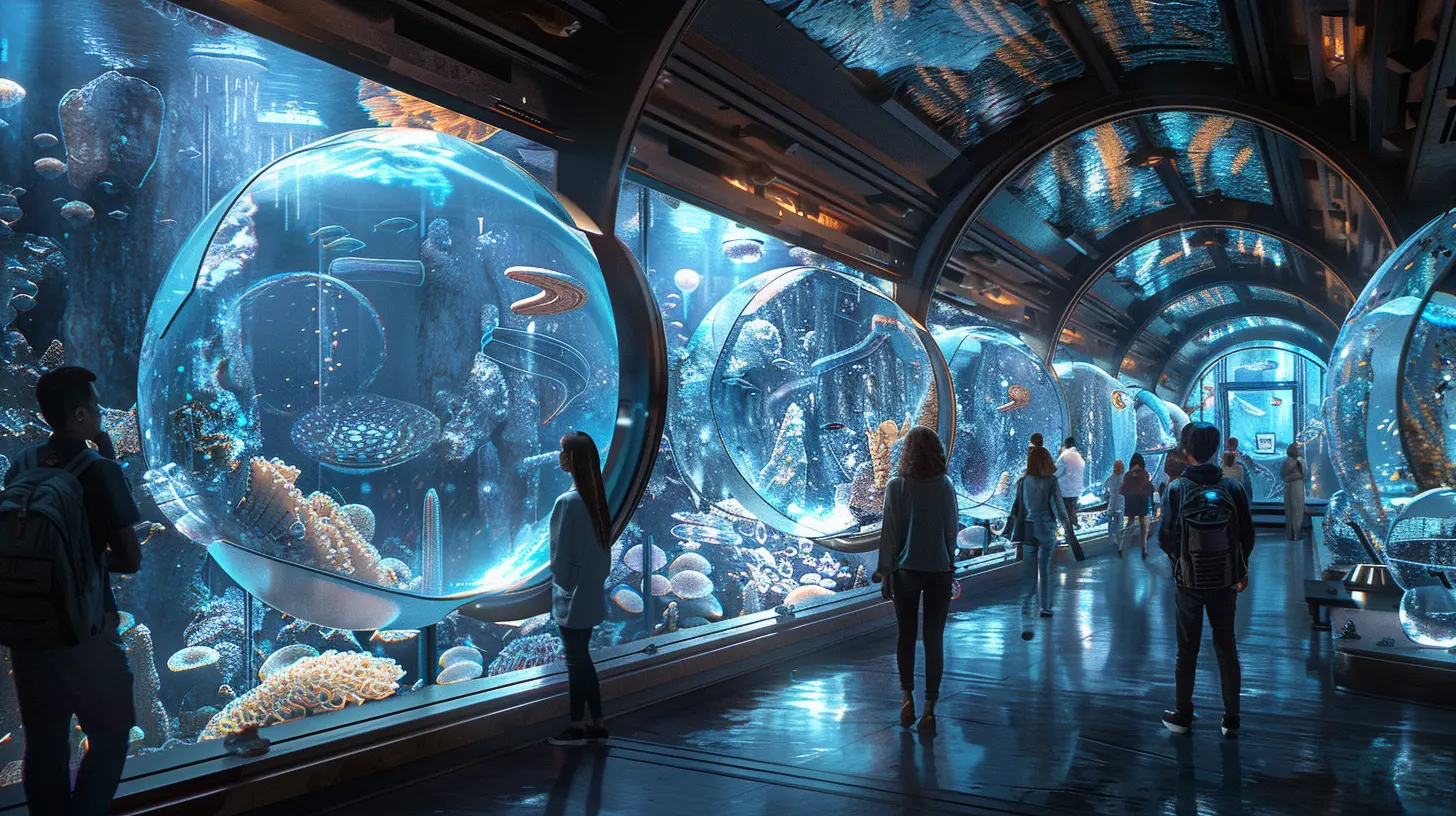Museums of the Future: How Technology is Shaping Exhibits
24 June 2025
Museums have always been a gateway to history, culture, and science. But let’s be honest—sometimes, they felt a little… static. You’d walk in, read some plaques, admire artifacts behind glass, and move on. But times are changing. Today’s museums are evolving into dynamic, interactive spaces where technology breathes new life into exhibits.
With advancements like augmented reality (AR), artificial intelligence (AI), and even virtual reality (VR), museums are no longer just places to observe; they're places to experience. So, how exactly is technology shaping the museums of the future? Let’s dive in.

The Rise of Interactive Exhibits
Gone are the days when visitors simply looked at artifacts and read descriptions. Now, museums are embracing interactive exhibits that engage the senses and make history feel alive. Touchscreens, motion sensors, and immersive storytelling bring exhibits to life in unexpected ways.Touchscreens and Digital Kiosks
Think about it: instead of reading a tiny, faded plaque next to an artifact, wouldn’t it be better to interact with a touchscreen that offers videos, 3D models, and even historical reenactments? Many museums now have digital kiosks where visitors can zoom in on artwork, read related historical facts, and even listen to experts discuss the piece. This makes learning more engaging and accessible.Motion-Sensor Displays
Some museums have taken interactivity even further by using motion-sensing technology. Imagine walking up to an exhibit, and suddenly, a holographic guide appears, telling you the story behind the artifact. This isn't science fiction—it’s happening right now in modern museums.
Augmented Reality (AR): Bringing History to Life
One of the most exciting technologies shaping museums is augmented reality (AR). Unlike virtual reality, which immerses you in a completely digital world, AR layers digital information onto the real environment.AR in Art Museums
Take the art world, for example. With an AR app, visitors can point their smartphones at a painting and see it come to life. Some museums use AR to show how a painting evolved over time, revealing hidden sketches beneath the final masterpiece.Historical Reenactments Through AR
History museums have also embraced AR to recreate historical moments. Imagine standing in front of an ancient battlefield and, through your smartphone or AR glasses, watching a simulation of events unfolding in real-time. It’s like stepping inside history rather than just reading about it.
Virtual Reality (VR): Stepping Into the Past
If AR enhances reality, virtual reality (VR) replaces it entirely. Many museums are using VR to transport visitors to different places and times, making exhibits more engaging than ever.Virtual Tours of Ancient Civilizations
Ever wanted to walk through ancient Rome or visit the Egyptian pyramids without leaving your city? VR exhibits allow visitors to explore historical sites that no longer exist or are too fragile for public access. With a VR headset, you can step into these lost worlds and experience them firsthand.Space and Science Exhibits
Some museums are even using VR to take visitors beyond our planet. The American Museum of Natural History in New York, for example, has a VR experience that lets visitors feel like they’re walking on Mars. It’s the closest thing you can get to space travel without leaving Earth!
Artificial Intelligence (AI) and Personalized Museum Experiences
AI isn’t just about robots and sci-fi movies. Museums are using AI to personalize the visitor experience in ways we never thought possible.AI-Powered Virtual Guides
Instead of traditional audio guides, some museums now offer AI chatbots that can answer your questions in real time. Want to know more about an exhibit? Simply ask the AI, and it will provide a detailed, engaging explanation. Some even use machine learning to adapt their responses based on visitor interests.Smart Recommendations
Just like Netflix recommends movies based on what you’ve watched, museums are starting to use AI to offer personalized exhibit recommendations. If a visitor spends a lot of time in the ancient history section, the museum can suggest similar exhibits they might enjoy.3D Printing: Recreating the Past
Another game-changing technology in museums is 3D printing. This allows institutions to recreate artifacts and even entire fossils with incredible accuracy.Replica Artifacts for Hands-On Learning
Some museums use 3D printing to create replicas of fragile artifacts, allowing visitors to handle them without risking damage. Think about how much more immersive that is—actually holding a replica of an ancient sculpture rather than just looking at it behind glass.Preserving Historical Artifacts
3D scanning and printing also help with preservation efforts. Museums can create digital backups of artifacts in case of damage or deterioration, ensuring that history isn’t lost forever.
Holograms: Bringing Historical Figures Back to Life
Imagine walking into a museum and being greeted by a lifelike hologram of Albert Einstein, explaining the theory of relativity in his own words. Some museums are using holographic technology to resurrect historical figures, making learning far more immersive.Holographic Storytelling
A few museums have even started using holograms to create interactive storytelling experiences. Instead of just reading about historical events, visitors can engage in dialogues with AI-powered holograms, asking questions and getting responses in real-time.The Impact of Technology on Museum Accessibility
Technology isn’t just making museums cooler—it’s also making them more accessible to a wider audience.Virtual Museum Tours
For those who can’t visit in person, many museums now offer virtual tours, allowing people from all over the world to explore exhibits from their homes. This became especially popular during the COVID-19 pandemic, and it’s here to stay.Assistive Technologies for Disabled Visitors
Many museums are incorporating assistive technologies, such as AI-powered sign language interpreters, audio descriptions for the visually impaired, and touch-friendly exhibits for those with mobility challenges. Technology is ensuring that museums are truly for everyone.
What Does the Future Hold?
So, what’s next? Museums are constantly evolving, and emerging technologies like brain-computer interfaces, enhanced AI interactions, and even sensory-enhancing tech might completely change how we engage with history, art, and science.One thing is clear: the museums of the future won’t just be places where we go to learn. They’ll be living, breathing experiences that make history, art, and science feel real, tangible, and personal.
Final Thoughts
Gone are the days of just staring at dusty artifacts behind glass. With AR, VR, AI, holograms, and more, museums are stepping into the future, making every visit an adventure. Whether it's chatting with an AI guide, exploring ancient worlds in VR, or interacting with lifelike holograms, museums are becoming more immersive, engaging, and accessible than ever before.So, the next time you visit a museum, be ready for something extraordinary—because technology is changing the game, and the future of museums looks brighter than ever.
all images in this post were generated using AI tools
Category:
Museums And GalleriesAuthor:

Taylor McDowell
Discussion
rate this article
2 comments
Izaak McEvoy
Exciting advancements! Museums are evolving beautifully for everyone.
September 10, 2025 at 4:08 AM

Taylor McDowell
Thank you! It's inspiring to see how technology is enhancing accessibility and engagement in museums.
Zoey Gomez
This article brilliantly highlights how technology transforms museum experiences, engaging visitors in innovative ways. From virtual reality to interactive displays, the future of museums promises immersive storytelling that enhances our understanding of art and history. Exciting times ahead!
July 1, 2025 at 2:50 PM

Taylor McDowell
Thank you for your insightful comment! I'm thrilled you found the article highlights the exciting ways technology is reshaping museum experiences.


